USA routs Guatemala despite Alex Morgan's injury, other key absences

CHICAGO -- The U.S. beat Guatemala 5-0 and took control of its group in the CONCACAF Women’s World Cup qualifying tournament, but the big story of the night was the left ankle injury suffered by Alex Morgan, who left the game in the first half. Morgan went down hard after rolling the same ankle that plagued her during a seven-month injury layoff earlier this year.
The initial report from U.S. Soccer was a left ankle sprain. Morgan, who was in clear pain after falling to the turf, was set to get an MRI by Saturday morning.
Here are my three thoughts on the game:
1.We finally saw the real U.S. team in the second half
WWCQ notes: More on USSF playing Hope Solo; T&T's financial hurdle
On a night when veterans Abby Wambach and Christie Rampone didn’t play, the U.S. struggled in the first half, scoring only once in the first 45 minutes and showing much of the same disjointed attack that we saw in an underwhelming 1-0 opening-game win against Trinidad and Tobago. The second half for the U.S. was much better. The Americans had a lot more energy and used the full width of the field, opening up the Guatemalans and pouring in the goals. Playing just 48 hours after Game 1, the U.S. made the most of its advantages in fitness and depth against a foe that largely ran out of gas.
2.The U.S.’s skill players did their job
The U.S. often gets criticized for being more about athleticism and speed than soccer skills, but Tobin Heath and Megan Rapinoe showed off some serious skills in the second half. Heath scored two goals for the first time in her U.S. career, including one on a majestic backward flick in the box, and was a menace down the left flank until she made an intriguing move to left back late. As for Rapinoe, the TildaSwinton look-alike hit a golazo from outside the box that was every bit the match of Heath’s second for style points. Did Wambach’s absence create the conditions for Heath and Rapinoe to stand out with their skills? Perhaps, though it certainly should be possible for them to do those things with Wambach on the field, too.
• Mia Hamm: 2015 Women's World Cup should be played on grass
3. CONCACAF is getting more competitive
Well-adjusted Christen Press aims to leave her mark on star-laden USWNT
Yes, 5-0 may seem like a one-sided scoreline. But Guatemala, which was down just 1-0 at halftime. looked much better in this game than it did during a 13-0 loss to the U.S. in qualifying for the 2012 Olympics just three years ago. That’s a good sign for women’s soccer in this region, which needs more teams to compete with the U.S., Canada and Mexico, the previous CONCACAF teams to compete in the Women’s World Cup. So far, we’ve seen good soccer in this tournament from a number of teams that could qualify for the WWC. Costa Rica beat Mexico for the first time ever, a deserved 1-0 win. Trinidad and Tobago held the U.S. to a 1-0 scoring margin, and Jamaica and Haiti have had good moments too so far. It’s a reason to be optimistic for the future.
GALLERY: Players to Watch in CONCACAF WWCQs
CONCACAF Women’s World Cup Qualifying Players to Watch
F Abby Wambach, USA
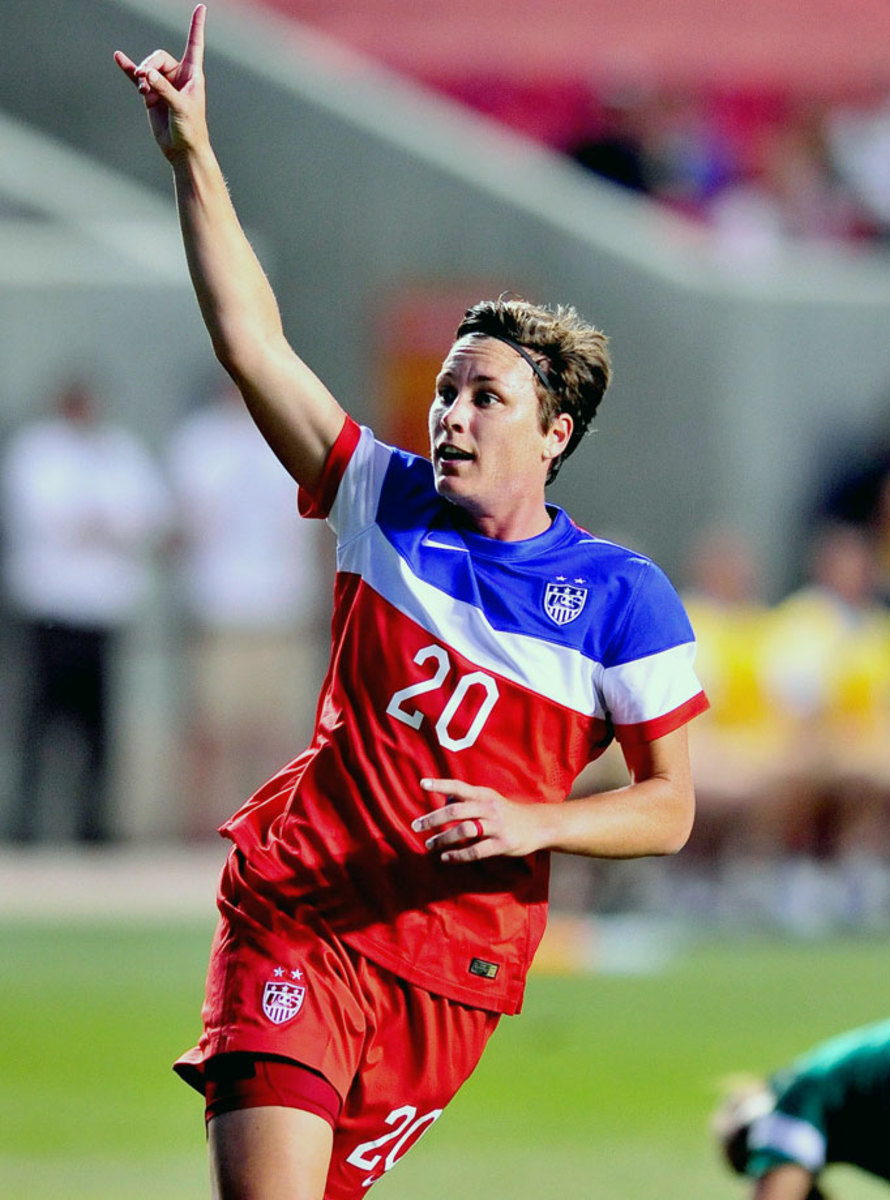
A hard-nosed center forward, Wambach has recently embraced playing a role deeper in midfield for the United States, but don’t expect to see the 2012 FIFA World Player of the Year stray too far away from her favorite spot on the field: in front of goal.
F Sydney Leroux, USA
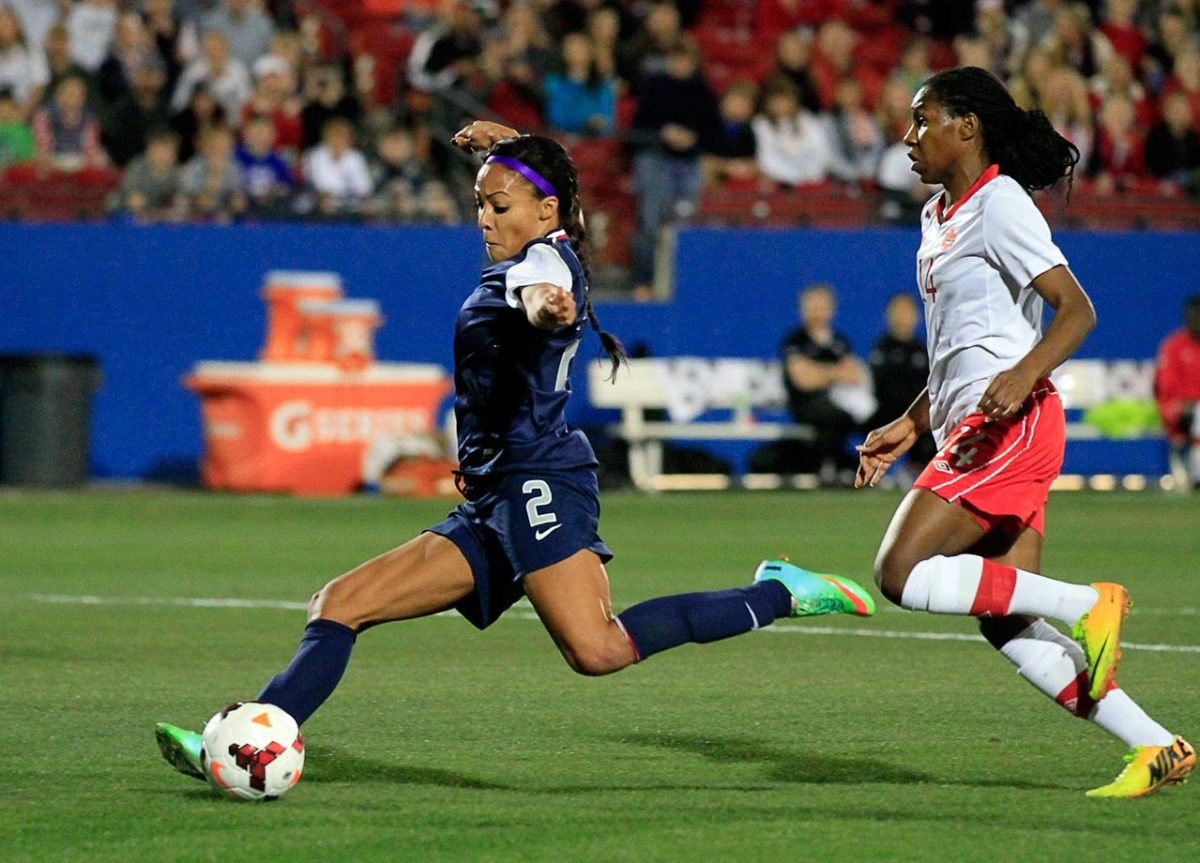
Leroux enjoyed a stellar breakout onto the international scene with 14 goals in 2012, including a five-goal game in her hometown of Vancouver, B.C., against group-stage opponent Guatemala. She also scored four goals in one game in 2013 against Mexico, the U.S.’s biggest threat in these qualifiers.
F Alex Morgan, USA
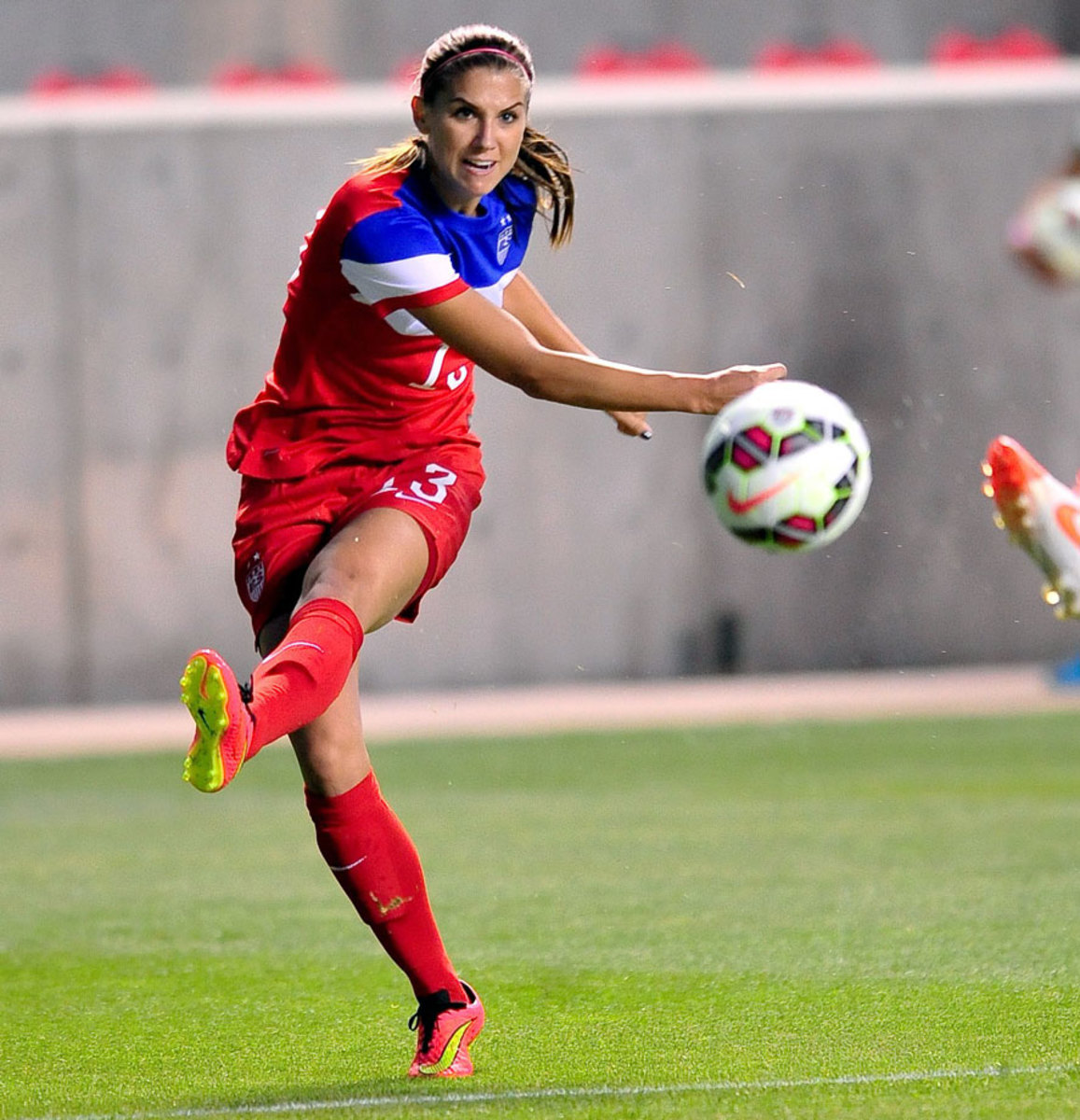
Despite an injury-addled 2014 season, Morgan remains the face of the American team and one of its biggest threats in attack. It took her over a year to start scoring again for the U.S. after an ankle injury that took a long time to heal, but she scored three goals against Mexico in the team’s most recent tune-up matches before qualifiers.
M Carli Lloyd, USA
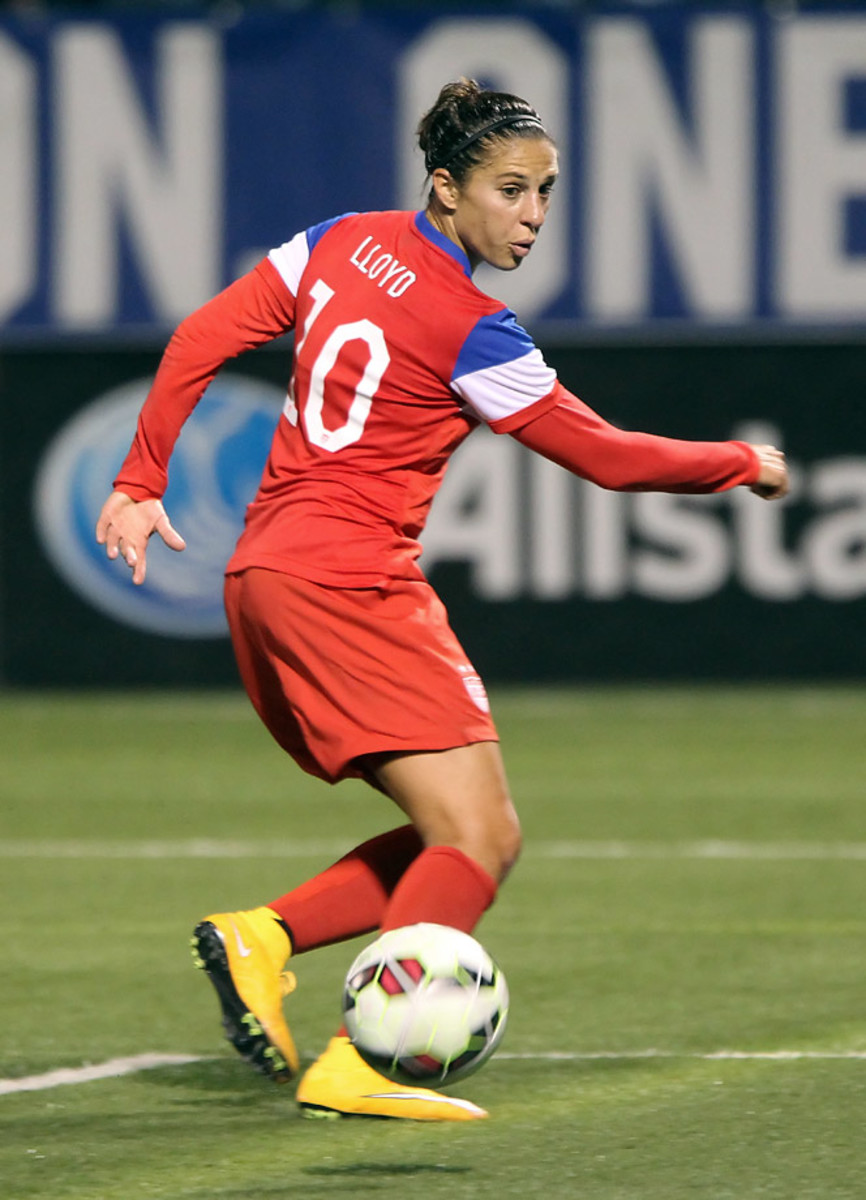
She doesn’t have the name-brand recognition of the other U.S. stars on this list, but Lloyd is still one of the team’s most consistent players and an important cog in midfield. She’s the only player, male or female, to score the gold medal-winning goal in two separate Olympics, as she did in 2008 and 2012, when she scored both in a 2-1 win over Japan.
GK Hope Solo, USA
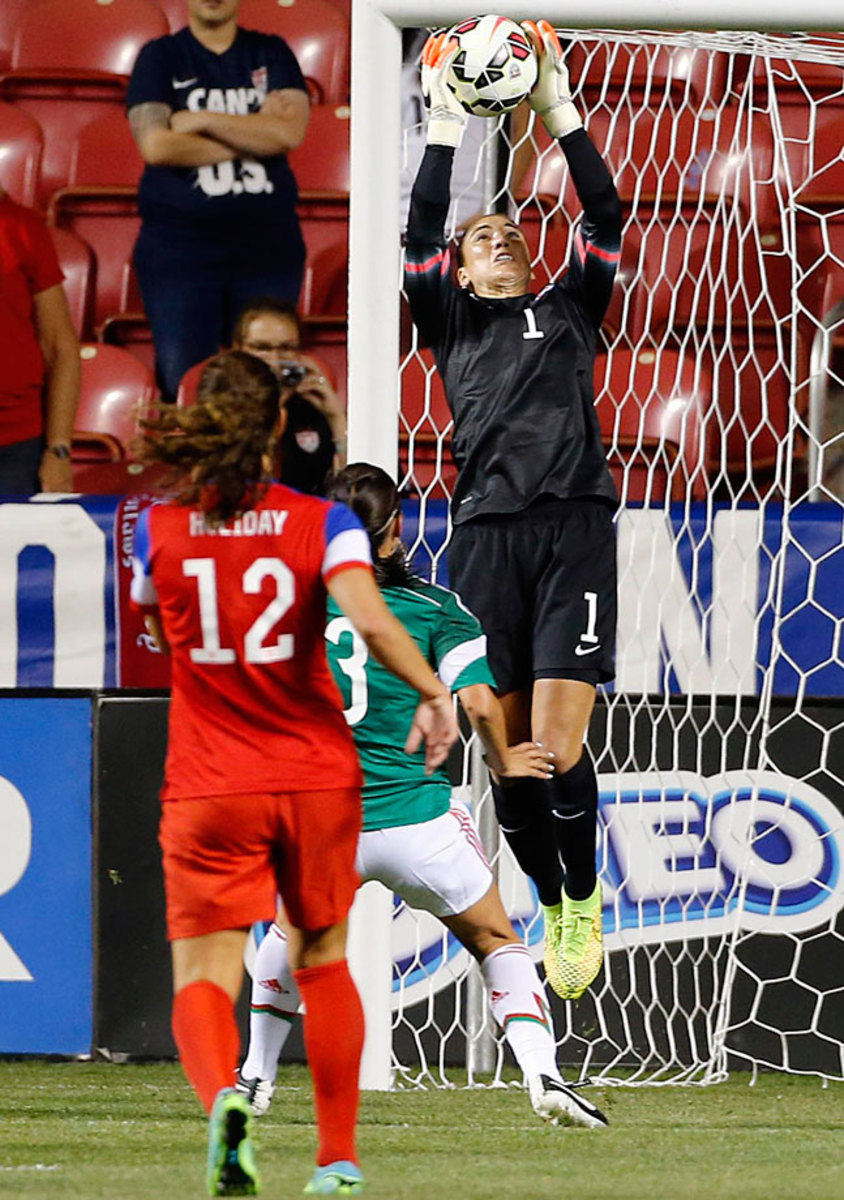
Despite her recent legal troubles and the attention that has come with it — she’s currently awaiting trial for domestic violence — Solo continues to play well for her country. She set the U.S. record for career shutouts with her 72nd in a friendly against Mexico in September.
D Alina Garciamendez, Mexico
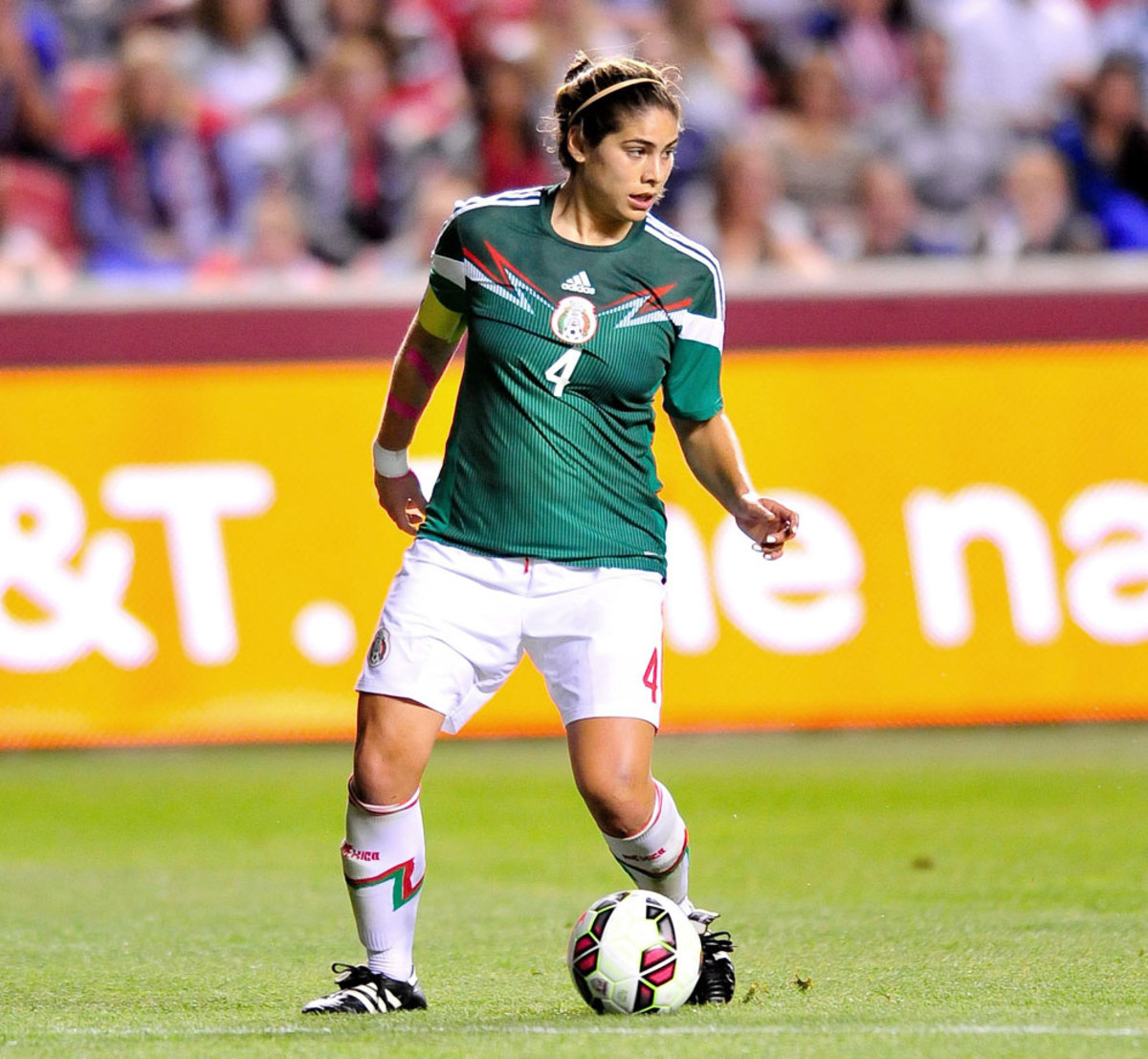
After starting for Mexico as a Stanford player at the 2011 World Cup, Garciamendez opted to go abroad for her rookie professional season in 2013 rather than joining the National Women’s Soccer League. The Texas-born defender signed with FFC Frankfurt in the Frauen Bundesliga.
M Teresa Noyola, Mexico
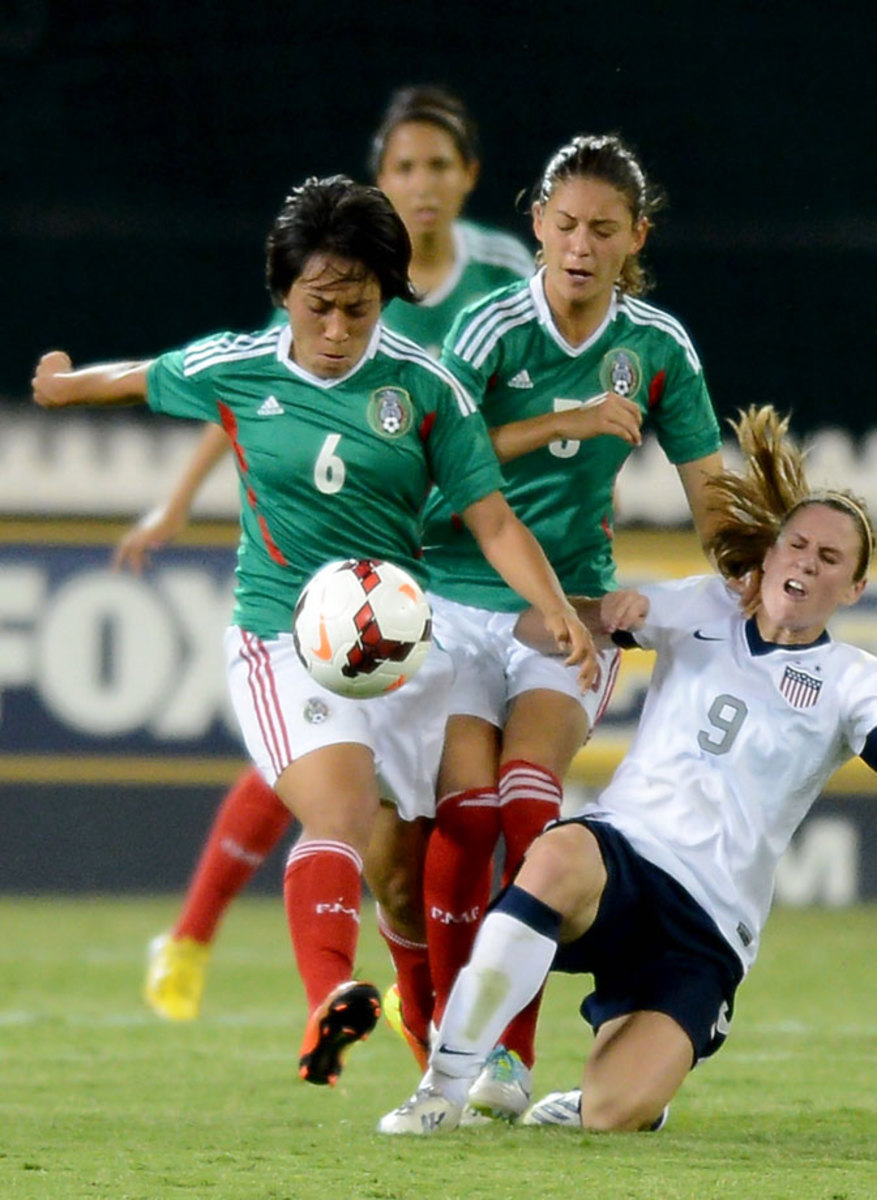
Noyola won the Hermann Trophy as college soccer’s top player in 2011, when she played for Stanford. As a youth player, she represented the U.S. from the under-14 to under-20 level before joining Mexico in 2010, in time to play for El Tri in the 2011 World Cup.
GK Cecilia Santiago, Mexico
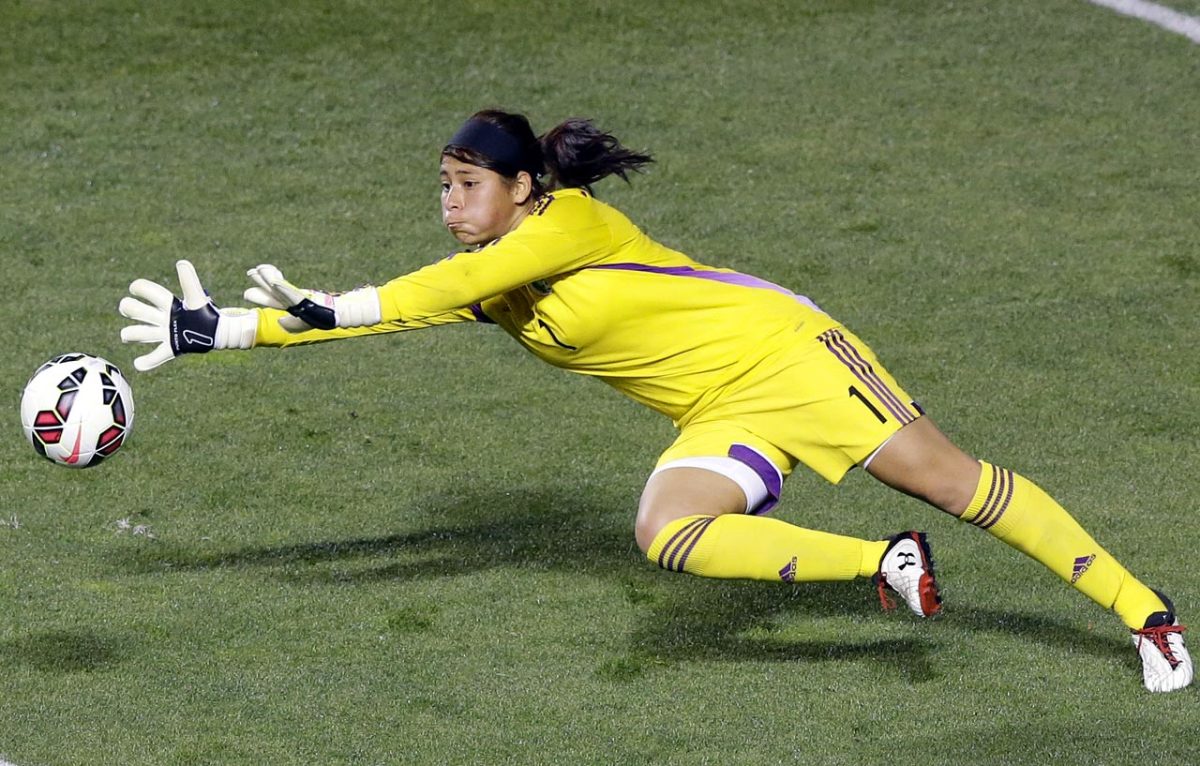
Santiago made the World Cup roster for Mexico at age 16 in 2011, and she’s the youngest goalkeeper of either gender to play in a World Cup. Being the youngest player has become familiar territory for her, as she had just turned 14 at the 2008 Under-20 World Cup, and she played an important role in Mexico’s advancement to the quarterfinals in the 2010 edition of the same tournament.
F Daphne Herrera, Costa Rica
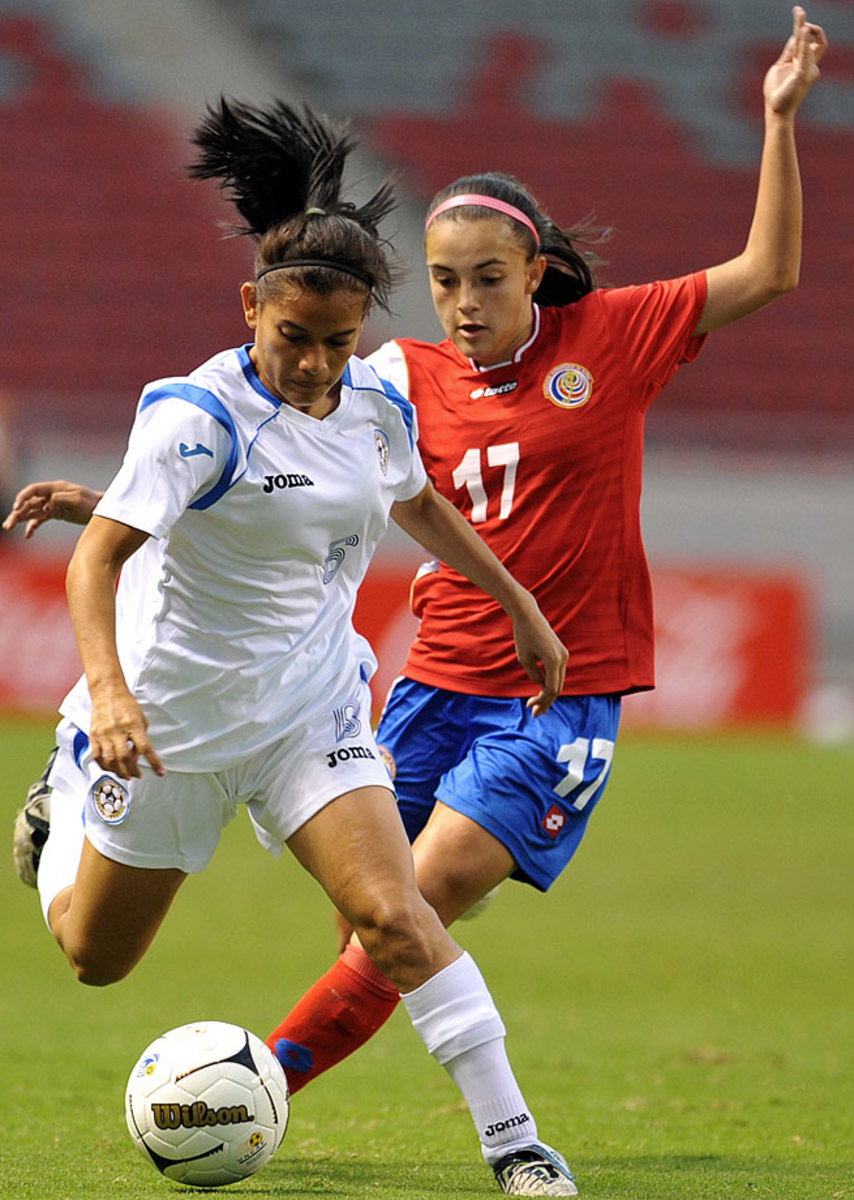
Two months after playing for Costa Rica in the Under-20 World Cup, 18-year-old Herrera (right) will be with the senior team as it attempts to qualify for its first World Cup. Costa Rica only scored two goals at the tournament, and Herrera scored the first, in a 5-1 loss to France in the opening group game.
MF Shirley Cruz, Costa Rica
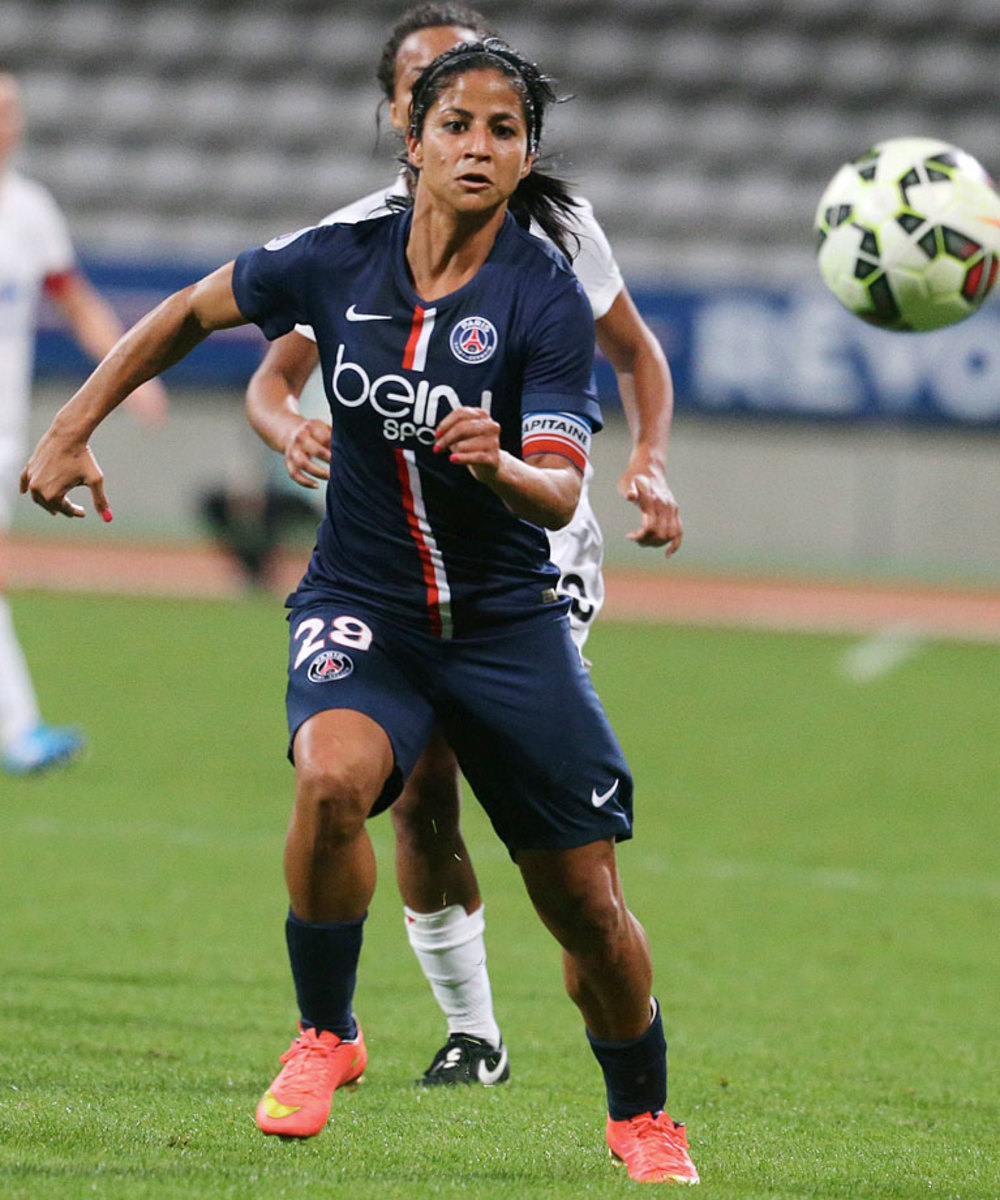
Cruz has spent her entire professional career in France’s Ligue 1 Féminine, first at Lyon from 2006 to 2012 before moving to Paris Saint-Germain. She has won two UEFA Champions League titles, two French Cups and six Ligue 1 titles, as well as scoring 18 goals in 29 caps for the Ticos.
D Alicia Wilson, Jamaica
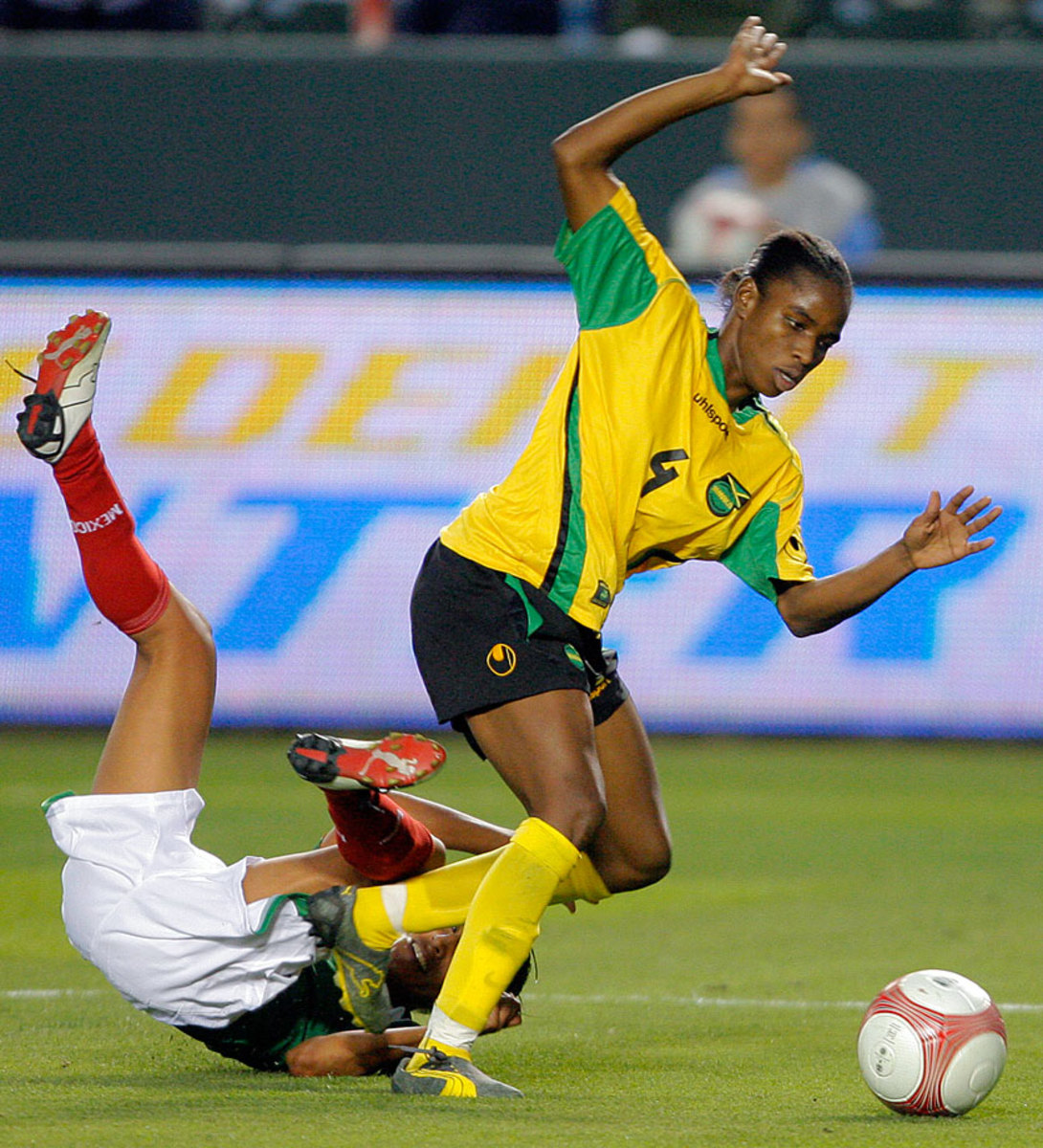
Jamaica’s captain is an assistant coach at University of West Florida, where she rejoined the coaching staff last year after playing professionally in Iceland and Costa Rica. The 35-year-old quit playing for the national team after its failed World Cup bid in 2006, but she returned to play in the Caribbean Cup in June and will lead her country out this month again.
F Shakira Duncan, Jamaica
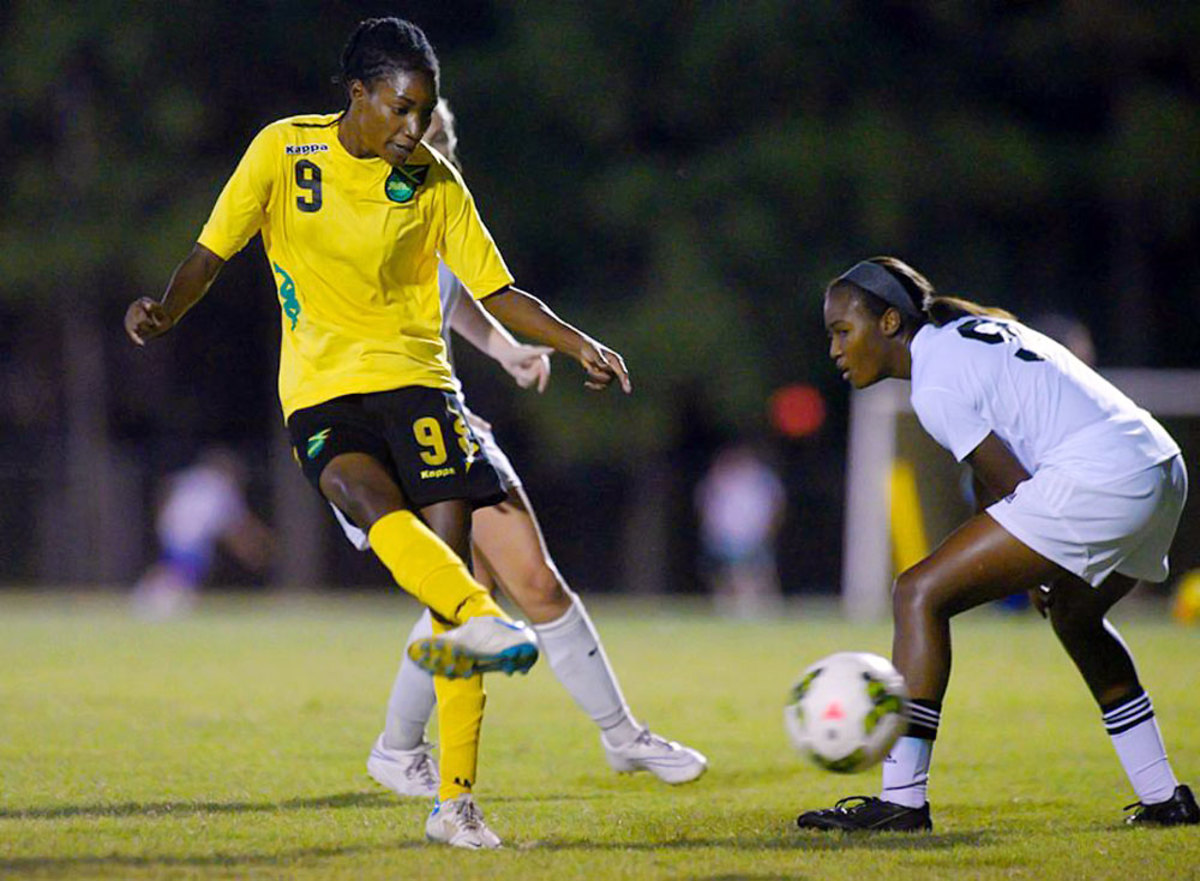
Another West Florida connection on the Jamaican squad and the team’s go-to goalscorer, Duncan played for the Argos after transferring from Darton State College. She was the Ron Lenz National Player of the Year both seasons after scoring a program-record 33 goals and 13 assists in 2009, following up with another 31 goals and 12 assists in 2010.
D Daniela Andrade, Guatemala
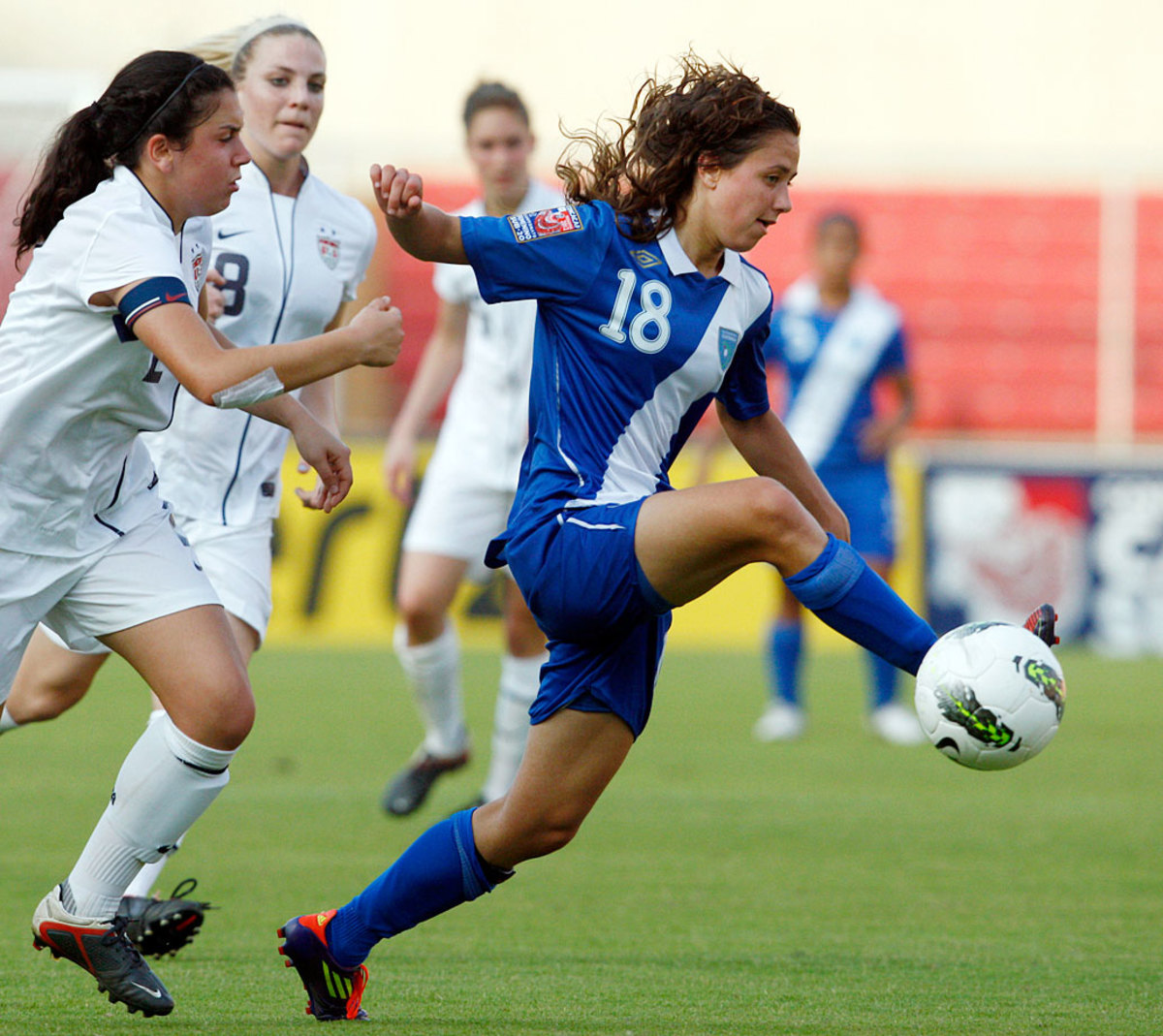
Andrade is a senior at University of South Florida, where she plays as an outside back. She’s been an important part of the Bulls team since her sophomore year, but she has been a part of the senior national set-up for even longer, since Guatemala’s last World Cup qualifying campaign, when it lost to the U.S. 9-0 in the group stage.
F Maria Monterroso, Guatemala
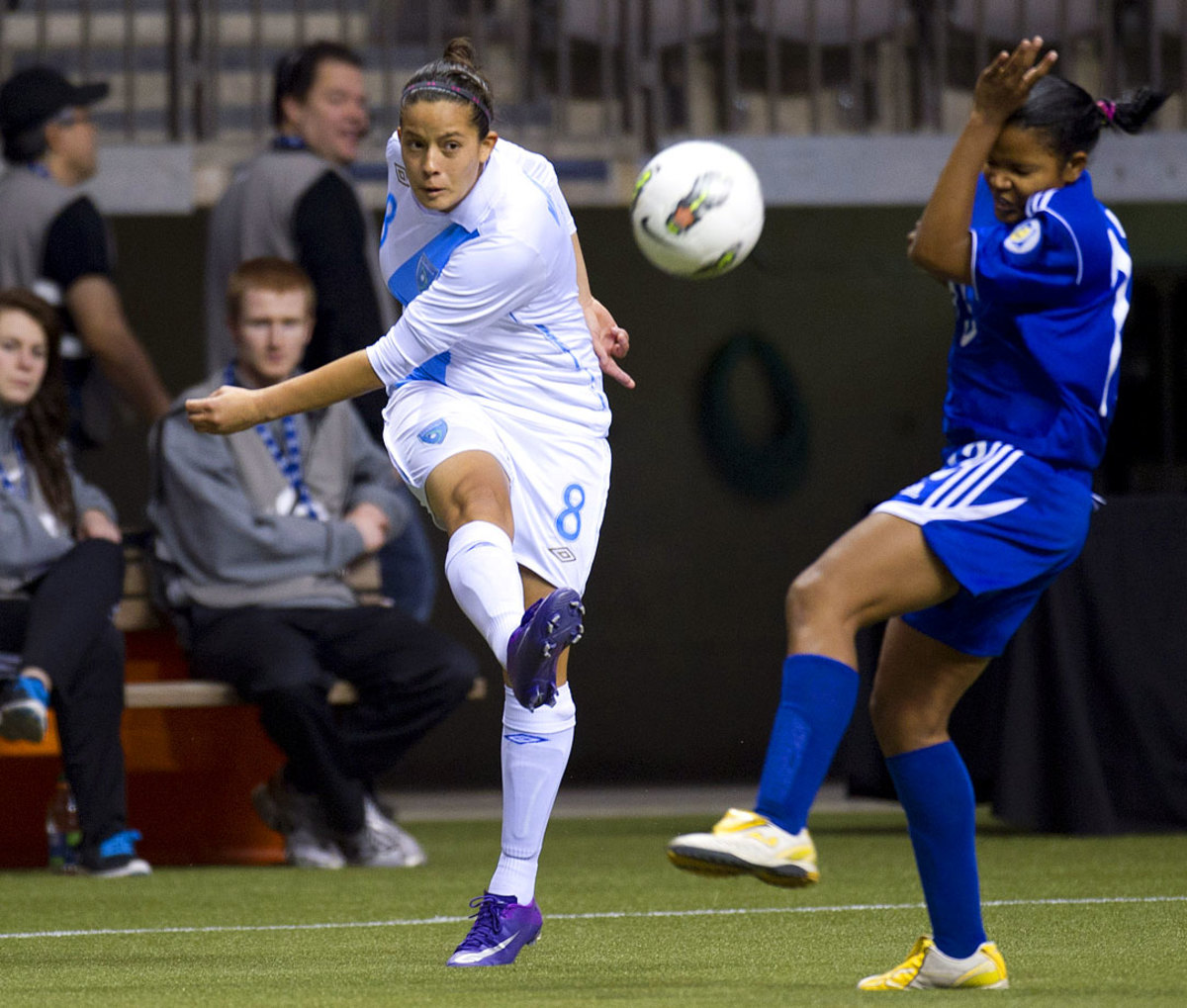
Another collegiate player, Monterroso plays college ball for Grand Canyon University in Phoenix. She is the Antelopes’ leading scorer this year with six goals, following up on a 20-goal 2012 freshman season at Lyon College in the NAIA.
F Kennya Cordner, Trinidad & Tobago
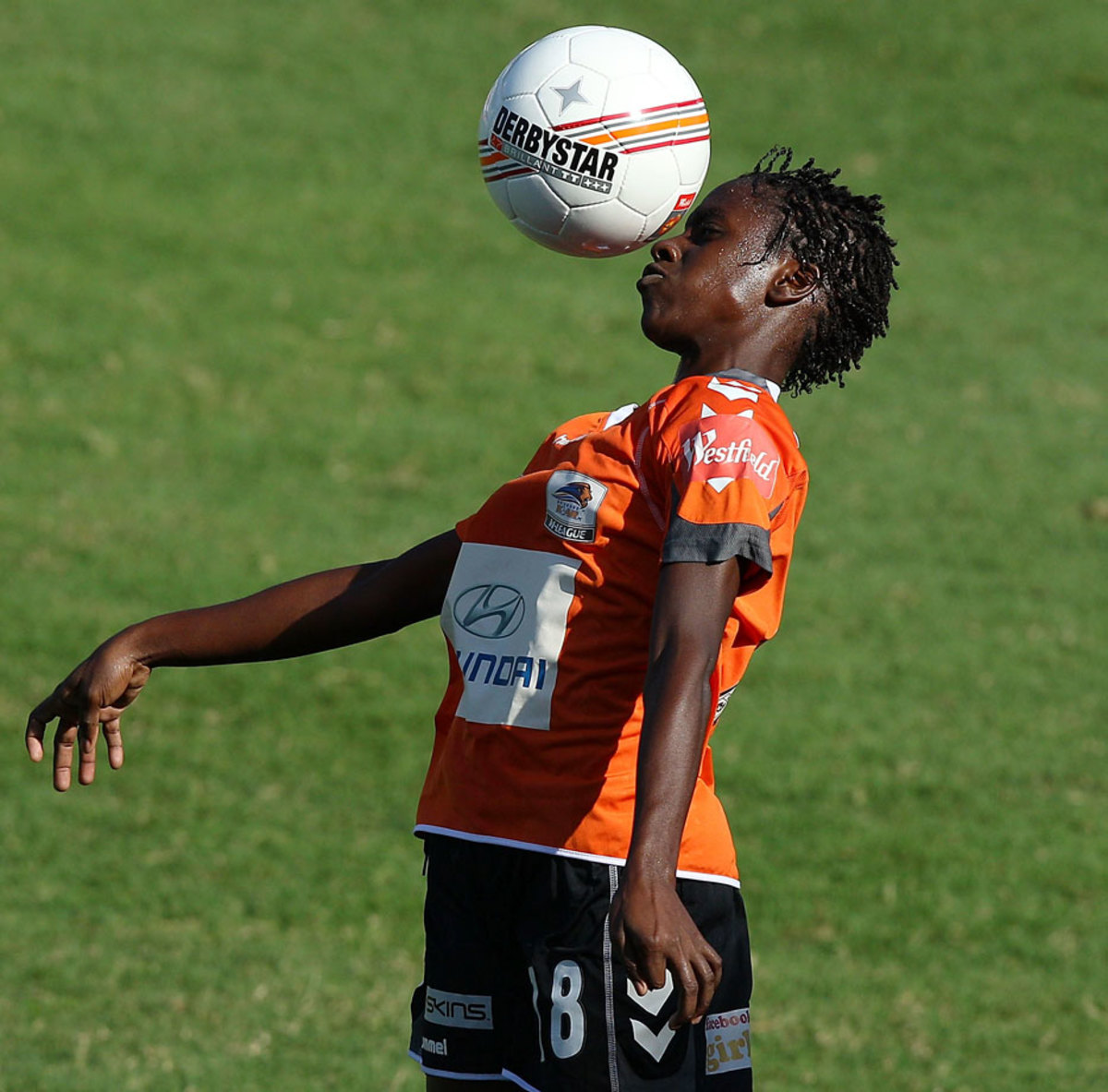
Cordner briefly joined the Seattle Reign during the 2013 NWSL season, when Seattle desperately needed a goalscorer, and Cordner had scored four goals in three appearances for the Reign Reserves. In 2014, she played for the Seattle Sounders Women and led the team with eight goals in just seven appearances.
F Ahkeela Mollon, Trinidad & Tobago
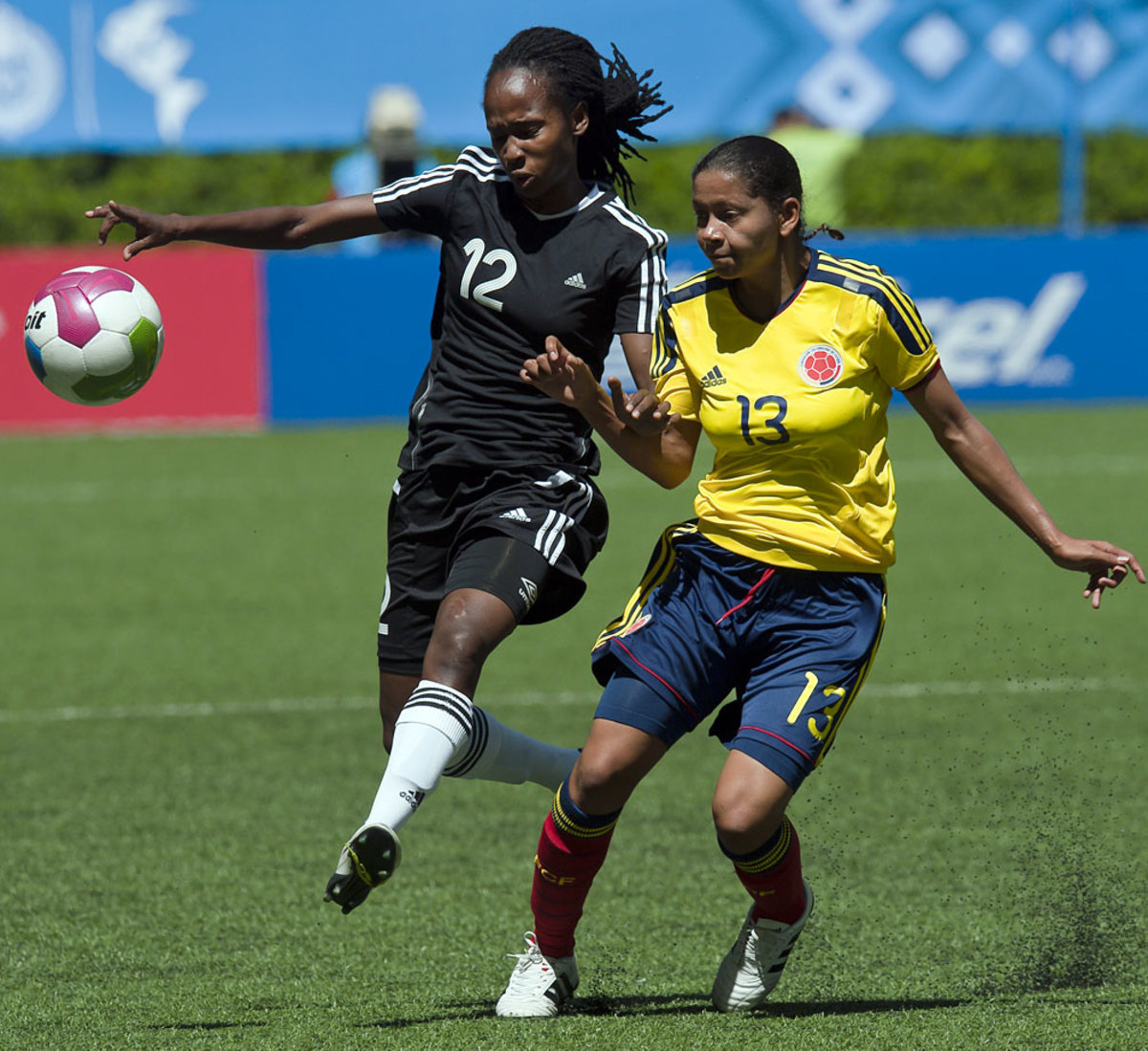
Mollon has played most of her professional career in northern Europe, floating between Iceland and Sweden. She will miss Kvarnsveden’s final match of the season due to national-team commitments, but her team can finish no higher than third, which is one spot short of promotion to Sweden’s top league, the Damallsvenskan.
